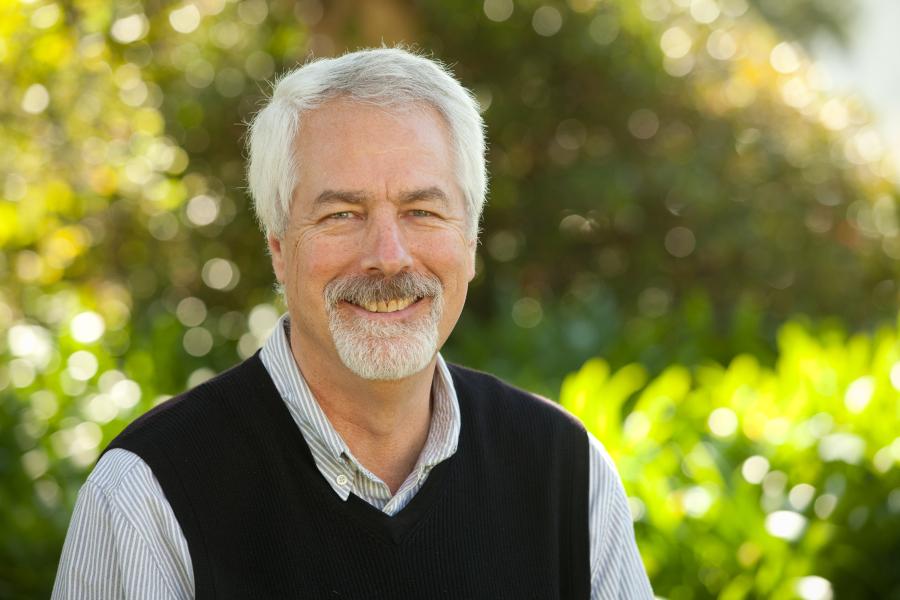FACULTY
Fueling Bodies and Minds

Gregg Afman begins his anatomy class by telling students he hopes they have an “awful experience.” “I don’t want aweSOME,” he says. “I want you to be FULL of awe.”
A towering figure, Gregg uses his deep, husky voice to share his awe for God’s creation. “I love nature. I love the mountains. But there’s nothing more majestic than the human body,” he says. “I think it’s so important to learn anatomy. It’s fascinating. And there’s no substitute for enthusiasm in teaching and caring about every student.”
His passion has inspired students during his 26 years of teaching and coaching. Many of his former students and players have achieved significant success in their fields. His areas of expertise include human anatomy, exercise physiology, strength and conditioning and exercise for older populations.
Gregg arrived at Westmont in 1999 to establish the college’s first kinesiology lab and serve as head coach of the women’s basketball team. He had coached men’s and women’s basketball and track and field at Calvin and Hope Colleges in Michigan and served as an assistant coach for men’s basketball at Calvin, his alma mater, when the team won the 1992 national championship.
A three-time All-American track and field athlete in the javelin (1974-76), Gregg remains No. 2 on the all-time list for best career field goal percentage (61%, 192-315) on the men’s basketball team (1972-76). In 1976, he won Calvin’s Beré Memorial Award honoring the top senior male student-athlete for athletic ability, scholastic rank, character and leadership. He earned a Doctor of Education at Brigham Young University.
Named GSAC Coach of the Year for the 2000-01 season, Gregg amassed an overall record of 83-71 for five seasons (1999-2004). His first team finished 6-20, so he recruited four first-year students who helped turn things around. The Warriors finished 22-12 that season — the biggest turnaround in college basketball that year — and were the college’s first women’s basketball team to reach the NAIA Tournament.
“Everyone on the team graduated,” Gregg says. “They’ve succeeded, have loving families and remain friends, even meeting in Santa Barbara a few years ago.”
He stepped down from coaching in 2005 to focus on teaching kinesiology, taking his first sabbatical to collaborate on research at Loughborough University in England, a top sports science school. There he met doctoral student James Betts, who walked in wearing a Dallas Mavericks jersey. Gregg asked, “You like basketball?” Betts said, “I love basketball.” The two instantly connected and bonded over their shared love of basketball. “We’ve been good friends for 20 years,” Gregg says.
This international collaboration led to many research projects, several directly involving Westmont students. With researchers at the University of Bath, the two developed nutritional practices to help professional basketball players. Their study demonstrated that sodium bicarbonate (baking soda) and carbohydrate supplements can help counter the physical challenges these players face.
One of their studies produced shock waves in December 2018 when they released their findings about the energy cost of sitting versus standing: Standing naturally at a desk burns only slightly more calories than sitting naturally. The New York Times and The Daily Mail reported the story, which had the potential to reach 118 million readers.
Gregg has twice received the Bruce and Adeline Bare Teacher of the Year award and has co-led more than a dozen study-abroad trips, where kinesiology students conduct exercise science research at England’s University of Bath. Gregg’s perseverance and persuasion led to Westmont students being the first outsiders to dissect cadavers at the University of Edinburgh in Scotland. “It’s been an amazing collaboration for our students to learn in a world-renowned program that has taught anatomy since 1705!” he says.
This is a story from the Spring 2025 Westmont Magazine